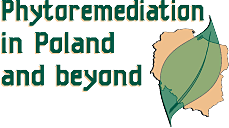

  In the October/December 1997 issue of Initiatives, we reported that DOE’s Office of Environmental Management sponsored a phytoremediation project in the industrial city of Katowice, Poland. Polish scientists from the Institute for the Ecology of Industrial Areas, or IETU, are collaborating with Phytotech, a U.S. company that has developed hybrid species of plants and special soil amendments for facilitating the plants’ rapid uptake and storage of metals in plant tissue. Florida State University’s Institute for International Cooperative Environmental Research is managing DOE’s phytoremediation project in Poland. A primary goal of this demonstration project has been to advance phytoremediation for use at DOE facilities across the United States. We know that trees and plants provide us a vital service by absorbing carbon dioxide in the atmosphere and releasing oxygen. Now we’re learning more about the ability of plants to clean up soil and groundwater contaminated by low levels of metals or radionuclides. The process is called phytoremediation, and it’s already generated positive results in Eastern Europe and in the United States. Phytoremediation is the general term for using plants and trees to clean up contaminated soil and water by breaking down or degrading organic pollutants or stabilizing metal contaminants by acting as filters or traps. The method has been shown to be effective for remediation of lead, copper, cesium, arsenic, cadmium, zinc, nickel, and uranium.
SCFA is also sponsoring a phytoremediaton demonstration at Argonne National Laboratory–West near Idaho Falls, Idaho. In a full-scale field test, which began in May and is scheduled to last two years, DOE scientists are collaborating with Applied Natural Sciences, Inc. through a cooperative research and development agreement. Hybrid willow trees and a common weed, Kochia scoparia, were planted in soil contaminated with radioactive cesium and nonradioactive metals. The plants will be periodically harvested, dried, packaged, and then incinerated. The resulting ash will be sampled, analyzed, and disposed of at an appropriate disposal facility. The site conditions at Argonne–West are favorable for employing phytoremediation: industrial waste ditches and ponds and sanitary sewage lagoons resulted in contaminated shallow-surface soils and sediments in ditch and pond bottoms. The application of the phytoremediation process is anticipated to result in a 40 percent cost savings over traditional excavation and treatment approaches. Ray Hinchman, botanist and plant physiologist at Argonne, notes that “phytoremediation is an in situ approach” not reliant on the transport of contaminated material to other sites. In many cases, organic contaminants are completely destroyed (converted to CO2 and H2O) rather than simply immobilized or stored. Dr. Hinchman and his colleagues are also working with Applied Natural Sciences to explore deeper (up to 30-foot) soil horizons using a trademarked process called Treemediation®. Phytoremediation isn’t the panacea for all contaminated soils. The technology can be applied only to sites that have relatively low concentrations of metal or radionuclide contaminants in surface soils. Since the rate of uptake is limited by the plant’s rate of growth, phytoremediation is somewhat slower than approaches such as excavation and treatment. Also, the plants can uptake only to the depth of their roots, so contamination must be surficial. Despite those limitations, phytoremediation is promising to be a cost-effective alternative to labor-intensive approaches such as excavation and pump and treat. Phytoremediation is also an aesthetically pleasing, passive, solar energy–driven cleanup technique that appeals to many environmentalists and the general public. For more information on the phytoremediation project at Argonne–West, call Ray Hinchman, (630) 252-3391, or Scott Lee, (208) 533-7829. For general information and a list of resources on phytoremediation, visit the Remediation Technologies Development Forum Web site at http://www. rtdf.org.
|